Monique Snyman's Blog, page 2
May 10, 2025
BookStrology Forecast: May 11â18, 2025 (Mother’s Day Edition)
For the ones who mother quietly, fiercely, and in unexpected ways …
Itâs not all roses and tearjerkers this week. The stars are leaning into complexity: care that hurts, silence that protects, and love that lingers long after it shouldâve let go. Whether youâre a mother, had one, lost one, or walked away from one â this week is about what it costs to care.
So hereâs your reminder: You donât owe anyone a perfect version of yourself. You donât have to answer every call. And youâre allowed to read in the bath with the door locked.
The stars are nudging you toward a story that sees you, holds you, maybe unsettles you just enough to feel alive.
Table of Contents
ToggleBookStrology Forecast: May 11â18, 2025 (Mother’s Day Edition) Aries
Aries Taurus
Taurus Gemini
Gemini Cancer
Cancer Leo
Leo Virgo
Virgo Libra
Libra Scorpio
Scorpio Sagittarius
Sagittarius Capricorn
Capricorn Aquarius
Aquarius Pisces
Pisces
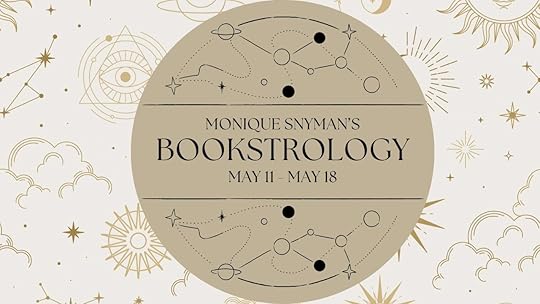
May 11â18, 2025
(Mother’s Day Edition)
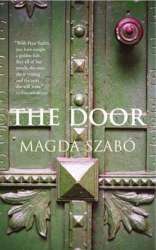
 Aries
AriesThis week: Youâre on edge. Ready to fight. Exhausted from holding it all.
Read: The Door by Magda Szabó
Two women â one old, one young. One a writer, one a housekeeper. Both hiding pasts they donât speak of.
â½ A motherly note from the stars:Â Let someone in, even if they arrive messy and loud. Youâve been the gatekeeper of your own strength for so long that vulnerability feels like a threat. But connection, even imperfect, is what softens the sharpest edges of exhaustion.
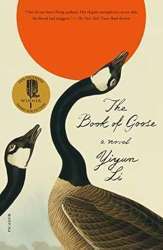
 Taurus
TaurusThis week: You’re stable on the outside, but emotionally threadbare.
Read: The Book of Goose by Yiyun Li
An eerie, elegant meditation on girlhood, obsession, and who gets to tell the story.
â½ A motherly note from the stars: Loyalty can be a beautiful thing, but not when it requires you to shrink. You do not have to keep proving your worth by staying in places that no longer see you clearly. Take a breath and remember that even the most grounded soul deserves room to grow.
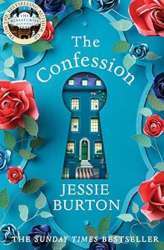
 Gemini
GeminiThis week: Youâre overexplaining. Overthinking. Over-everything.
Read: The Confessions by Jessie Burton
Mothers, muses, and misdirection. This book is a literary mystery wrapped in velvet.
â½ A motherly note from the stars:Â You donât need to perform emotional gymnastics just to be heard. Speak simply, feel deeply, and trust that the truth is enough. Thereâs power in dropping the script and simply standing in your story.
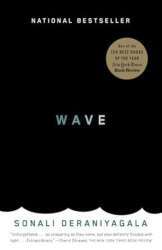
 Cancer
CancerThis week: Youâre grieving something no one else even notices.
Read: Wave by Sonali Deraniyagala
A memoir of staggering grief and impossible survival. Itâs raw, oceanic, and unforgettable â like love at its most unrelenting.
â½ A motherly note from the stars:Â Youâve been quietly carrying so much weight that even you forget how heavy it really is. Just because no one else sees your sorrow doesnât mean itâs not real. You are allowed to name your grief. You are allowed to rest.
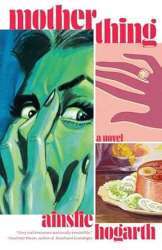
 Leo
LeoThis week: Youâre exhausted from being the strong one.
Read: Motherthing by Ainslie Hogarth
Mother-in-law horror with a neon heart and pitch-black humor.
â½ A motherly note from the stars:Â Even the boldest hearts need a place to unravel. You donât have to keep wearing courage like armor every single day. Let yourself fall apart a little if you need to. You are no less radiant when you’re raw.
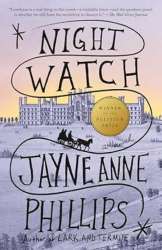
 Virgo
VirgoThis week: Youâre tending everyone elseâs wounds but ignoring your own.
Read: Night Watch by Jayne Anne Phillips
Asylum ghosts, Civil War scars, and the quiet terror of motherhood.
â½ A motherly note from the stars: You donât need to earn your rest. Itâs okay to take a break, even when you feel thereâs always more to do. Your body and spirit are deserving of care, just like those you so lovingly tend to.
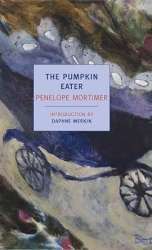
 Libra
LibraThis week: Youâre making grief look graceful.
Read: The Pumpkin Eater by Penelope Mortimer
Brutal, stylish, devastating. A woman comes apart … and not neatly.
â½ A motherly note from the stars: You donât owe anyone a palatable breakdown. Grief is messy, and so are you. Itâs okay to fall apart, to not be âgracefulâ about it. Youâre allowed to express your sorrow in all its forms without fear of judgment.
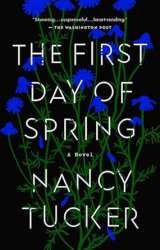
 Scorpio
ScorpioThis week: Youâre holding onto secrets that were never yours to keep.
Read: The First Day of Spring by Nancy Tucker
What happens when a child commits the unthinkable? Guilt, survival, and the hope for redemption.
â½ A motherly note from the stars: Youâre allowed to unwrite the narrative, even if itâs tattooed on your soul. The secrets you carry do not define you. Itâs okay to let go, to rewrite your own story.
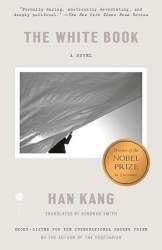
 Sagittarius
SagittariusThis week: Youâre trying to outrun a memory.
Read: The White Book by Han Kang
Meditative, fragmented, and haunting. A book to read alone and slowly.
â½ A motherly note from the stars: You donât have to be anywhere but here. Running from the past only tires you more. Itâs time to stay present and embrace the moment, no matter how difficult it may feel. Healing happens when you stop fleeing.
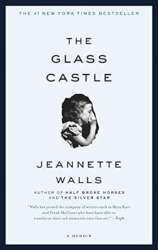
 Capricorn
CapricornThis week: Youâre the default caretaker, and itâs taking a toll.
Read: The Glass Castle by Jeannette Walls
A memoir that sees dysfunction clearly but with compassion.
â½ A motherly note from the stars: No one is coming to rescue you, but you can still choose softness. Youâve been strong for others for so long, but now itâs time to soften and care for yourself. Donât forget that strength also lies in asking for help and knowing when to rest.
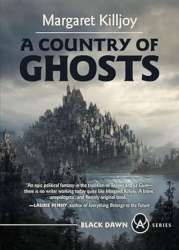
 Aquarius
AquariusThis week: Youâre detaching to survive.
Read: A Country of Ghosts by Margaret Killjoy
Fantasy with radical care, chosen family, and quiet rebellion.
â½ A motherly note from the stars: Connection doesnât have to mean control. Itâs okay to find peace in solitude and detach when needed, but remember that true connection is found in letting others in, on your terms.
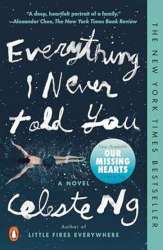
 Pisces
PiscesThis week: Youâre mourning things you canât name.
Read: Everything I Never Told You by Celeste Ng
A family. A daughter. An absence. A story that breathes with quiet heartbreak.
â½ A motherly note from the stars:Â Your sensitivity isnât a flaw, my dear, itâs a compass. Let your emotions guide you, not overwhelm you. There is strength in feeling deeply, and itâs what makes you uniquely you. Embrace it.
BookStrology Forecast: May 11���18, 2025 (Mother’s Day Edition)
For the ones who mother quietly, fiercely, and in unexpected ways …
It���s not all roses and tearjerkers this week. The stars are leaning into complexity: care that hurts, silence that protects, and love that lingers long after it should���ve let go. Whether you���re a mother, had one, lost one, or walked away from one ��� this week is about what it costs to care.
So here���s your reminder: You don���t owe anyone a perfect version of yourself. You don���t have to answer every call. And you���re allowed to read in the bath with the door locked.
The stars are nudging you toward a story that sees you, holds you, maybe unsettles you just enough to feel alive.
Table of Contents
ToggleBookStrology Forecast: May 11���18, 2025 (Mother’s Day Edition) Aries
Aries Taurus
Taurus Gemini
Gemini Cancer
Cancer Leo
Leo Virgo
Virgo Libra
Libra Scorpio
Scorpio Sagittarius
Sagittarius Capricorn
Capricorn Aquarius
Aquarius Pisces
Pisces

May 11���18, 2025
(Mother’s Day Edition)

 Aries
AriesThis week: You���re on edge. Ready to fight. Exhausted from holding it all.
Read: The Door by Magda Szab��
Two women ��� one old, one young. One a writer, one a housekeeper. Both hiding pasts they don���t speak of.
��� A motherly note from the stars:��Let someone in, even if they arrive messy and loud. You���ve been the gatekeeper of your own strength for so long that vulnerability feels like a threat. But connection, even imperfect, is what softens the sharpest edges of exhaustion.

 Taurus
TaurusThis week: You’re stable on the outside, but emotionally threadbare.
Read: The Book of Goose by Yiyun Li
An eerie, elegant meditation on girlhood, obsession, and who gets to tell the story.
��� A motherly note from the stars: Loyalty can be a beautiful thing, but not when it requires you to shrink. You do not have to keep proving your worth by staying in places that no longer see you clearly. Take a breath and remember that even the most grounded soul deserves room to grow.

 Gemini
GeminiThis week: You���re overexplaining. Overthinking. Over-everything.
Read: The Confessions by Jessie Burton
Mothers, muses, and misdirection. This book is a literary mystery wrapped in velvet.
��� A motherly note from the stars:��You don���t need to perform emotional gymnastics just to be heard. Speak simply, feel deeply, and trust that the truth is enough. There���s power in dropping the script and simply standing in your story.

 Cancer
CancerThis week: You���re grieving something no one else even notices.
Read: Wave by Sonali Deraniyagala
A memoir of staggering grief and impossible survival. It���s raw, oceanic, and unforgettable ��� like love at its most unrelenting.
��� A motherly note from the stars:��You���ve been quietly carrying so much weight that even you forget how heavy it really is. Just because no one else sees your sorrow doesn���t mean it���s not real. You are allowed to name your grief. You are allowed to rest.

 Leo
LeoThis week: You���re exhausted from being the strong one.
Read: Motherthing by Ainslie Hogarth
Mother-in-law horror with a neon heart and pitch-black humor.
��� A motherly note from the stars:��Even the boldest hearts need a place to unravel. You don���t have to keep wearing courage like armor every single day. Let yourself fall apart a little if you need to. You are no less radiant when you’re raw.

 Virgo
VirgoThis week: You���re tending everyone else���s wounds but ignoring your own.
Read: Night Watch by Jayne Anne Phillips
Asylum ghosts, Civil War scars, and the quiet terror of motherhood.
��� A motherly note from the stars: You don���t need to earn your rest. It���s okay to take a break, even when you feel there���s always more to do. Your body and spirit are deserving of care, just like those you so lovingly tend to.

 Libra
LibraThis week: You���re making grief look graceful.
Read: The Pumpkin Eater by Penelope Mortimer
Brutal, stylish, devastating. A woman comes apart … and not neatly.
��� A motherly note from the stars: You don���t owe anyone a palatable breakdown. Grief is messy, and so are you. It���s okay to fall apart, to not be ���graceful��� about it. You���re allowed to express your sorrow in all its forms without fear of judgment.

 Scorpio
ScorpioThis week: You���re holding onto secrets that were never yours to keep.
Read: The First Day of Spring by Nancy Tucker
What happens when a child commits the unthinkable? Guilt, survival, and the hope for redemption.
��� A motherly note from the stars: You���re allowed to unwrite the narrative, even if it���s tattooed on your soul. The secrets you carry do not define you. It���s okay to let go, to rewrite your own story.

 Sagittarius
SagittariusThis week: You���re trying to outrun a memory.
Read: The White Book by Han Kang
Meditative, fragmented, and haunting. A book to read alone and slowly.
��� A motherly note from the stars: You don���t have to be anywhere but here. Running from the past only tires you more. It���s time to stay present and embrace the moment, no matter how difficult it may feel. Healing happens when you stop fleeing.

 Capricorn
CapricornThis week: You���re the default caretaker, and it���s taking a toll.
Read: The Glass Castle by Jeannette Walls
A memoir that sees dysfunction clearly but with compassion.
��� A motherly note from the stars: No one is coming to rescue you, but you can still choose softness. You���ve been strong for others for so long, but now it���s time to soften and care for yourself. Don���t forget that strength also lies in asking for help and knowing when to rest.

 Aquarius
AquariusThis week: You���re detaching to survive.
Read: A Country of Ghosts by Margaret Killjoy
Fantasy with radical care, chosen family, and quiet rebellion.
��� A motherly note from the stars: Connection doesn���t have to mean control. It���s okay to find peace in solitude and detach when needed, but remember that true connection is found in letting others in, on your terms.

 Pisces
PiscesThis week: You���re mourning things you can���t name.
Read: Everything I Never Told You by Celeste Ng
A family. A daughter. An absence. A story that breathes with quiet heartbreak.
��� A motherly note from the stars:��Your sensitivity isn���t a flaw, my dear, it���s a compass. Let your emotions guide you, not overwhelm you. There is strength in feeling deeply, and it���s what makes you uniquely you. Embrace it.
May 9, 2025
Hall of Horror: When Black-Eyed Children Knock, Donât Open the Door
Thereâs something deeply unsettling about the black-eyed children, and it has less to do with what they are and more to do with what they almost are. Theyâre polite. Well-mannered. Soft-spoken. They usually appear in pairs, somewhere around the ages of six to sixteen, and they always seem to be in need of help. One might knock on your door and ask to use the phone. Another might appear outside your car window at night, requesting a ride home. Itâs never a demand, only a request ⦠and yet the moment they speak, every part of your body tells you to shut the door, start the car, or look away.
What makes these encounters especially disturbing is how long it takes for people to register that somethingâs off. The clothes are often outdated or seasonally inappropriate. Their speech patterns donât quite fit their apparent age. Their smiles donât reach their eyes ⦠and when those eyes finally meet yours, all clarity hits at once. There are no whites. No visible irises. Just an unbroken field of matte black, cold and impossibly still. You are looking at something that is mimicking a child, but whatever it is, it doesnât belong here.
Table of Contents
TogglePermission Seems To Be The Only Rule They FollowUrban Legend Or Something Older In Disguise?The Danger Lies In How Normal They Almost Seem
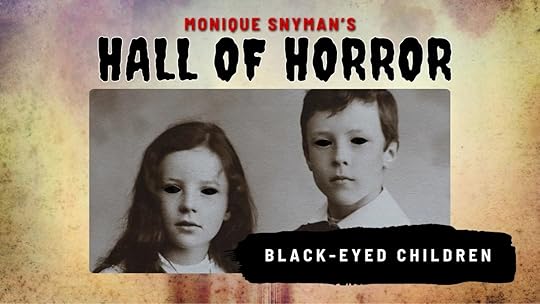
Across reports, one detail appears almost universally: the black-eyed children never enter without permission. They stand on the threshold, asking. They linger outside the car, waiting. They do not force their way in, and for many, that detail is more unsettling than if they had. It’s not that they can’t enter. It’s that they won’t, unless you let them.
This element links them to other folklore: vampires, demons, spirits bound by rules of invitation. But the black-eyed children donât feel ancient. They donât speak in riddles or display old-world affectations. Their requests are simple. Can I come in? Can I use your phone? Can you help me?
Yet people who say yes â whether out of confusion, fear, or social instinct â almost always regret it. After letting them in, some report sudden illness, power outages, malfunctioning electronics, or the immediate disappearance of the children themselves. Animals behave strangely. The atmosphere of the home shifts. People often describe feeling watched for days afterward, like something invisible followed them in.
None of these claims have been verified, of course. But when the stories come from people in different regions, with no reason to fabricate identical experiences, itâs hard not to wonder.
Urban Legend Or Something Older In Disguise?Many dismiss black-eyed children as a digital-age myth, a product of internet forums and creepypasta culture. The first viral account appeared in 1996, when journalist Brian Bethel described his encounter with two boys outside a movie theater in Abilene, Texas. The story spread quickly. More followed. And soon, the phenomenon had entered modern folklore.
But similar tales exist outside the digital age. Accounts of ghostly, black-eyed figures appear in older oral traditions, often under different names. In some cultures, they are omens. In others, they are tricksters or entities drawn to thresholds and boundaries. What they always seem to share is an uncanny resemblance to humans â and an unnatural interest in being invited into places they do not belong.
Skeptics argue these stories are driven by suggestibility and pattern recognition. We read one story, then reinterpret strange events in its shadow. But if this is a contemporary myth, itâs one that has endured with unusual consistency. The childrenâs behavior does not evolve. They do not update their clothing styles or shift tactics over time. They knock. They ask. And then they wait.
The Danger Lies In How Normal They Almost SeemIf a monster bangs on your door, you know what to do. But when two quiet children appear at dusk, asking to use your landline because their parents arenât home, hesitation becomes part of the trap. Weâre wired to help, especially when the request comes from a child. And thatâs the real horror of it â not just that something inhuman might be out there, but that it knows exactly how to use your humanity against you.
These encounters donât involve jump scares or loud chaos. They unravel slowly, leaving questions in their wake. Did that really happen? Was it just a trick of the light? Why did I feel sick afterward? Why canât I stop thinking about it?
Whether the black-eyed children are a modern myth, a psychological phenomenon, or something else entirely, they leave an impression. They do not knock and vanish. They linger. And even long after the moment has passed, people find themselves replaying it, over and over, wondering what might have happened if they had said yes.
If you liked this instalment of Monique Snymanâs Hall of Horror, make sure to subscribe to her newsletter so you donât miss a single post!
Hall of Horror: When Black-Eyed Children Knock, Don���t Open the Door
There���s something deeply unsettling about the black-eyed children, and it has less to do with what they are and more to do with what they almost are. They���re polite. Well-mannered. Soft-spoken. They usually appear in pairs, somewhere around the ages of six to sixteen, and they always seem to be in need of help. One might knock on your door and ask to use the phone. Another might appear outside your car window at night, requesting a ride home. It���s never a demand, only a request ��� and yet the moment they speak, every part of your body tells you to shut the door, start the car, or look away.
What makes these encounters especially disturbing is how long it takes for people to register that something���s off. The clothes are often outdated or seasonally inappropriate. Their speech patterns don���t quite fit their apparent age. Their smiles don���t reach their eyes ��� and when those eyes finally meet yours, all clarity hits at once. There are no whites. No visible irises. Just an unbroken field of matte black, cold and impossibly still. You are looking at something that is mimicking a child, but whatever it is, it doesn���t belong here.
Table of Contents
TogglePermission Seems To Be The Only Rule They FollowUrban Legend Or Something Older In Disguise?The Danger Lies In How Normal They Almost Seem

Across reports, one detail appears almost universally: the black-eyed children never enter without permission. They stand on the threshold, asking. They linger outside the car, waiting. They do not force their way in, and for many, that detail is more unsettling than if they had. It’s not that they can’t enter. It’s that they won’t, unless you let them.
This element links them to other folklore: vampires, demons, spirits bound by rules of invitation. But the black-eyed children don���t feel ancient. They don���t speak in riddles or display old-world affectations. Their requests are simple. Can I come in? Can I use your phone? Can you help me?
Yet people who say yes ��� whether out of confusion, fear, or social instinct ��� almost always regret it. After letting them in, some report sudden illness, power outages, malfunctioning electronics, or the immediate disappearance of the children themselves. Animals behave strangely. The atmosphere of the home shifts. People often describe feeling watched for days afterward, like something invisible followed them in.
None of these claims have been verified, of course. But when the stories come from people in different regions, with no reason to fabricate identical experiences, it���s hard not to wonder.
Urban Legend Or Something Older In Disguise?Many dismiss black-eyed children as a digital-age myth, a product of internet forums and creepypasta culture. The first viral account appeared in 1996, when journalist Brian Bethel described his encounter with two boys outside a movie theater in Abilene, Texas. The story spread quickly. More followed. And soon, the phenomenon had entered modern folklore.
But similar tales exist outside the digital age. Accounts of ghostly, black-eyed figures appear in older oral traditions, often under different names. In some cultures, they are omens. In others, they are tricksters or entities drawn to thresholds and boundaries. What they always seem to share is an uncanny resemblance to humans ��� and an unnatural interest in being invited into places they do not belong.
Skeptics argue these stories are driven by suggestibility and pattern recognition. We read one story, then reinterpret strange events in its shadow. But if this is a contemporary myth, it���s one that has endured with unusual consistency. The children���s behavior does not evolve. They do not update their clothing styles or shift tactics over time. They knock. They ask. And then they wait.
The Danger Lies In How Normal They Almost SeemIf a monster bangs on your door, you know what to do. But when two quiet children appear at dusk, asking to use your landline because their parents aren���t home, hesitation becomes part of the trap. We���re wired to help, especially when the request comes from a child. And that���s the real horror of it ��� not just that something inhuman might be out there, but that it knows exactly how to use your humanity against you.
These encounters don���t involve jump scares or loud chaos. They unravel slowly, leaving questions in their wake. Did that really happen? Was it just a trick of the light? Why did I feel sick afterward? Why can���t I stop thinking about it?
Whether the black-eyed children are a modern myth, a psychological phenomenon, or something else entirely, they leave an impression. They do not knock and vanish. They linger. And even long after the moment has passed, people find themselves replaying it, over and over, wondering what might have happened if they had said yes.
If you liked this instalment of��Monique Snyman���s Hall of Horror, make sure to��subscribe to her newsletter��so you don���t miss a single post!
May 8, 2025
Unearthing Australiaâs Bunyip, the Swamp-Dwelling Nightmare
Forget what you think you know about monsters. The Bunyip doesnât stalk forests in the dark or come crawling through your window. Why? Because it doesnât need to. Instead, it waits in the murky waters of Australiaâs creeks, swamps, and billabongs ⦠It is silent, watching, ancient, and when it strikes, there may be a scream, maybe a splash, but then? Nothing.
The Bunyip is more than a creature of Aboriginal legend. Itâs a manifestation of the wild, unknowable terror that lies just beyond the banks. A predator that doesnât just kill but consumes you so utterly, even your story sinks with you.
Table of Contents
ToggleShifting Shape, Constant DreadMore Than a MonsterAncient Echoes, Modern SightingsCome for the Views, Stay Forever
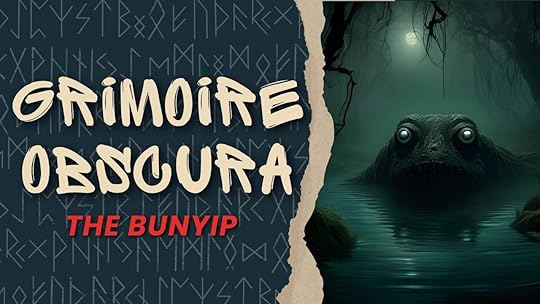
There is no single description of the Bunyip, which is part of its horror. People have described is as a giant serpent, a dog-faced creature with flippers, a long-necked water beast with smooth fur, or a hulking, tusked amphibian that bellows like a bull. The word bunyip itself comes from the Wemba-Wemba language, loosely translating to devil or spirit, but calling it that still doesnât do it justice.
This thing is old. Prehistoric. A possible leftover from a time before time, linked by some to extinct megafauna like the diprotodon. But while the science stays speculative, the fear? Thatâs real.
Aboriginal communities across Australia tell tales of this creature snatching people from the waterâs edge. Of children dragged under. Of camps disrupted by inhuman wails at night. Itâs not just a cautionary tale; this thing is a warning: Donât go near the water after dark.
And unlike many folkloric monsters thatâve softened over time, the Bunyip hasnât been declawed. There are no friendly cartoon versions, no sparkly bits ⦠No, no. It simply devours.
More Than a MonsterTo fully understand the Bunyip, you have to step into the mindset of the Dreaming â the Aboriginal spiritual belief system that sees all life as interconnected and the land as alive, which means the Bunyip isnât just something that lives in the swamp. It is the swamp. Itâs the embodiment of sacred danger, of the line between respect and recklessness.
In many traditions, waterholes and billabongs are sacred places. Some stories say the Bunyip was once a person who broke tribal law and was transformed as punishment. Others say itâs a guardian, protecting sacred spaces from those who dare to trespass.
Either way, itâs justice in flesh.
And this, dear reader, makes the Bunyip a uniquely terrifying creature because itâs not random. It punishes transgression. It doesnât stalk you because itâs hungry. It comes for you because you shouldnât have been there.
Ancient Echoes, Modern SightingsFor a monster rooted in the Dreaming, the Bunyip has a surprisingly long reach. Colonial-era reports in the 1800s are filled with settlers claiming to have seen the creature. Some say it resembled a giant seal with glowing eyes. Others found massive, clawed footprints near rivers. Bones and fossils were unearthed and assumed to belong to the beast. Even newspapers printed Bunyip sightings as late as the 20th century.
The stories evolved, but the fear remained.
Thereâs something disturbingly plausible about the Bunyip, too. Australia is filled with remote, uncharted regions and animals that defy logic. (Duck-billed platypus, anyone?) Itâs not hard to believe something ancient could still be hiding in those dark, muddy waters.
And even if it isnât, the vast, untamed, unpredictable landscape itself makes you believe it could be. You walk near a silent swamp at dusk, and suddenly, you understand why the Bunyip doesnât need to be seen to be feared.
Come for the Views, Stay ForeverIn the quiet corners of the Australian wilderness, the Bunyip serves as a reminder that some places hold secrets, memories, and maybe a little something more. These are the places where the earth seems to listen, where the shadows stretch deeper than you can see.
The Bunyip is the voice of these forgotten spaces, urging you to stay away. Donât linger. Donât peer into the dark water. And for the love of everything that is good in this world ⦠Donât. Ignore. The. Stories.
The next Grimoire Obscura instalment will take you on another deep dive into creatures from yore. See you at the edge.
Unearthing Australia���s Bunyip, the Swamp-Dwelling Nightmare
Forget what you think you know about monsters. The Bunyip doesn���t stalk forests in the dark or come crawling through your window. Why? Because it doesn���t need to. Instead, it waits in the murky waters of Australia���s creeks, swamps, and billabongs ��� It is silent, watching, ancient, and when it strikes, there may be a scream, maybe a splash, but then? Nothing.
The Bunyip is more than a creature of Aboriginal legend. It���s a manifestation of the wild, unknowable terror that lies just beyond the banks. A predator that doesn���t just kill but consumes you so utterly, even your story sinks with you.
Table of Contents
ToggleShifting Shape, Constant DreadMore Than a MonsterAncient Echoes, Modern SightingsCome for the Views, Stay Forever

There is no single description of the Bunyip, which is part of its horror. People have described is as a giant serpent, a dog-faced creature with flippers, a long-necked water beast with smooth fur, or a hulking, tusked amphibian that bellows like a bull. The word bunyip itself comes from the Wemba-Wemba language, loosely translating to devil or spirit, but calling it that still doesn���t do it justice.
This thing is old. Prehistoric. A possible leftover from a time before time, linked by some to extinct megafauna like the diprotodon. But while the science stays speculative, the fear? That���s real.
Aboriginal communities across Australia tell tales of this creature snatching people from the water���s edge. Of children dragged under. Of camps disrupted by inhuman wails at night. It���s not just a cautionary tale; this thing is a warning: Don���t go near the water after dark.
And unlike many folkloric monsters that���ve softened over time, the Bunyip hasn���t been declawed. There are no friendly cartoon versions, no sparkly bits ��� No, no. It simply devours.
More Than a MonsterTo fully understand the Bunyip, you have to step into the mindset of the Dreaming ��� the Aboriginal spiritual belief system that sees all life as interconnected and the land as alive, which means the Bunyip isn���t just something that lives in the swamp. It is the swamp. It���s the embodiment of sacred danger, of the line between respect and recklessness.
In many traditions, waterholes and billabongs are sacred places. Some stories say the Bunyip was once a person who broke tribal law and was transformed as punishment. Others say it���s a guardian, protecting sacred spaces from those who dare to trespass.
Either way, it���s justice in flesh.
And this, dear reader, makes the Bunyip a uniquely terrifying creature because it���s not random. It punishes transgression. It doesn���t stalk you because it���s hungry. It comes for you because you shouldn���t have been there.
Ancient Echoes, Modern SightingsFor a monster rooted in the Dreaming, the Bunyip has a surprisingly long reach. Colonial-era reports in the 1800s are filled with settlers claiming to have seen the creature. Some say it resembled a giant seal with glowing eyes. Others found massive, clawed footprints near rivers. Bones and fossils were unearthed and assumed to belong to the beast. Even newspapers printed Bunyip sightings as late as the 20th century.
The stories evolved, but the fear remained.
There���s something disturbingly plausible about the Bunyip, too. Australia is filled with remote, uncharted regions and animals that defy logic. (Duck-billed platypus, anyone?) It���s not hard to believe something ancient could still be hiding in those dark, muddy waters.
And even if it isn���t, the vast, untamed, unpredictable landscape itself makes you believe it could be. You walk near a silent swamp at dusk, and suddenly, you understand why the Bunyip doesn���t need to be seen to be feared.
Come for the Views, Stay ForeverIn the quiet corners of the Australian wilderness, the Bunyip serves as a reminder that some places hold secrets, memories, and maybe a little something more. These are the places where the earth seems to listen, where the shadows stretch deeper than you can see.
The Bunyip is the voice of these forgotten spaces, urging you to stay away. Don���t linger. Don���t peer into the dark water. And for the love of everything that is good in this world ��� Don���t. Ignore. The. Stories.
The next Grimoire Obscura instalment will take you on another deep dive into creatures from yore. See you at the edge.
May 6, 2025
Writing Tip: Planting Subtle Symbols Early
If used with intention and restraint, symbols become anchors that transform stories from flat to layered, giving your narrative a deeper pulse. But the trick isn���t using symbols; it���s planting them early and subtly enough that readers won���t recognize them until it matters.
Let me be clear: heavy-handed symbolism is the literary equivalent of a neon sign screaming “THIS IS MEANINGFUL!” And trust me, readers don���t need to be told what to feel. They want to discover it. That discovery is where the real power of subtle symbolic planting lives.
Table of Contents
ToggleThe Power of a Well-Planted SymbolIt’s Not About Shouting!Don’t Make It A SceneThis Is Storytelling In DisguiseDon���t Confuse Symbolism with MetaphorLess Is Always MoreIn The End ���
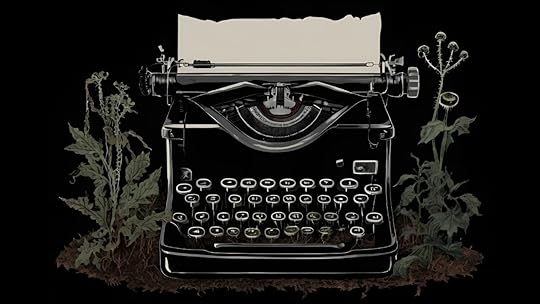
Think of a symbols like seeds. You plant it in the early soil of your story. You don���t do it to be flashy, but to root something deeper. Maybe it���s a locket, a dead crow, a cracked windowpane. Whatever ���it��� is, it seems ordinary at first. Innocuous. Then, as the story grows, that same detail begins to echo with layered meaning.
Take the cracked window, for instance. At first, it���s just something the protagonist notices on her way out of the house. Midway through, the window mirrors the breakdown of her marriage. By the climax, it becomes a threshold. It���s something she looks through just before choosing to leave for good.
That���s not a coincidence. That���s craft.
It’s Not About Shouting!Your first introduction of a symbol should feel natural, even mundane. If it draws attention to itself too early, you risk deflating its eventual weight. This is about earn power through repetition and context ��� not through a spotlight.
When done right, your reader won���t even clock the detail at first. But by the end, they���ll think: Wait, that was there the whole time? That���s the moment you want. It���s what makes a story linger in someone���s mind long after they���ve closed the book.
Don’t Make It A SceneSo, how do you sneak symbols into your narrative without sounding like you���re trying too hard?
Pick the Right Object or Motif: Choose something ordinary, something that fits seamlessly into the world you���re building. A recurring song. A chipped mug. A specific flower. It needs to be something your character could realistically notice or interact with multiple times, without making a production out of it.Let It Recur Organically: Don���t force your symbol into every scene. Instead, let it reappear at critical emotional beats. That���s how the meaning accumulates. A photograph might be mentioned briefly in chapter one, revisited during an argument in chapter five, and torn up during the climax. Each appearance builds on the last.Tie It to Emotional Shifts: The symbol���s evolution should parallel your character���s arc. If the mug starts off as a comforting item from home, then gets shattered after a betrayal, your reader feels that shift viscerally, even if they don���t consciously register the symbolism.Trust the Reader: One of the worst things you can do is over-explain. You don���t need a character to monologue about what the cracked window means. You don���t need a narrator to point it out. Let the image speak for itself. Trust that your reader is smart enough to connect the dots.This Is Storytelling In DisguiseHere���s the thing: when you plant a subtle symbol early, you���re playing the long game. You���re adding texture, resonance, and a kind of invisible thread that ties your narrative together. It���s not just about being clever, it���s about being deliberate.
Every time that object or motif reappears, it deepens the emotional stakes. It creates a sense of cohesion and payoff. It tells the reader: This story was built with intention.
Don���t Confuse Symbolism with MetaphorIt���s worth clarifying that metaphors live in the moment. They are quick flashes of comparison that enhance a line or image. Symbols endure. They���re planted early and cultivated slowly; they gather meaning through repetition and association.
If your character describes her life as ���a house with no foundation,��� that���s a metaphor. If the actual house she lives in starts to physically collapse over the course of the book, that���s symbolic. And if you���ve been showing that house crack, creak, and strain since the first chapter? That���s intentional symbolism done right.
Less Is Always MoreThe danger with symbols is going overboard. Too many of them, or too much emphasis on one, can make a story feel like it���s trying to impress rather than connect.
Remember: subtle doesn���t mean insignificant. It means strategic, like you���re choosing your moments with care.
A single recurring object, used well, can do more than a dozen metaphors trying to say the same thing.
In The End ���Subtle symbols aren���t literary decorations. They���re the quiet mechanics behind the emotional resonance of a story. Plant them early, return to them thoughtfully, and let them speak without explanation. That���s how you build stories that don���t just entertain but haunt.
Because long after your reader forgets the plot, they���ll remember the cracked window.
Check out some other��Writing Tips, and make sure to��subscribe to Monique���s newsletter��so you don���t miss a single post!
May 5, 2025
6 Found Footage Horror Books That Feel Like Watching a Cursed Tape
Weâre all used to the trope on screen: flickering lights, static-filled VHS tapes, grainy footage captured right before everything goes terribly wrong. But found footage horror doesnât need a screen to crawl under your skin. On the page, itâs even more intimate … more invasive. You’re not watching the horror unfold, you’re digging it up piece by piece.
These books come to you as transcripts, journal entries, case files, articles, and scraps of damaged lives. They feel like evidence. Like something you shouldnât be reading. Like the first step in a curse you didnât know youâd triggered.
What makes found footage horror so addictive is how real it feels. Thereâs no omniscient narrator to guide you. All you get are fragmented truths, unreliable voices, and the sense that youâve uncovered something dangerous. If you like your scares layered, literary, and disturbingly immersive, this list was made for you.
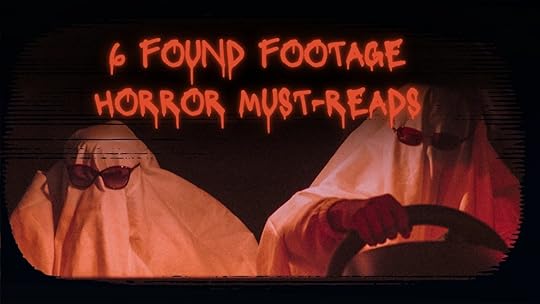
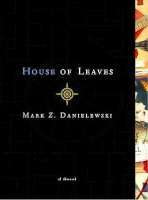 House of Leaves by Mark Z. Danielewski
House of Leaves by Mark Z. Danielewski
A young man finds a strange manuscript detailing a documentary about a house that defies the laws of physics. The deeper he reads, the more reality warps, both his reality and yours … With footnotes that spiral into madness and page layouts that mimic claustrophobia, this novel is the haunted house. A cult classic for a reason, itâs as much a puzzle as it is a descent into existential dread.
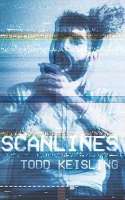 Scanlines by Todd Keisling
Scanlines by Todd Keisling
In the late â80s, five teens watch a pirated snuff video that ends in a horrific suicide and unwittingly trigger something that follows them into adulthood. Told with static-laced urgency, Scanlines reads like a cursed tape itself, filled with conspiracy, guilt, and analog nightmares. Short, brutal, and unshakable.
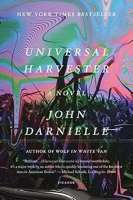 Universal Harvester by John Darnielle
Universal Harvester by John Darnielle
In a small Iowa town in the late ’90s, customers start returning VHS tapes with strange, disturbing footage spliced into their rented movies. The mystery unfolds through shifting timelines and narrators, unraveling grief, loss, and the echoes left behind on magnetic tape. Itâs quiet horror â aching and surreal â and it lingers like static in your mind.
 Horror Movie by Paul Tremblay
Horror Movie by Paul Tremblay
A cursed film. A doomed cast. A legacy soaked in blood. Tremblayâs latest blurs the line between script, memory, and confession. As a cult horror movie resurfaces decades after its banned premiere, survivors recount what really happened on set and what they brought back with them. This oneâs deeply unsettling in that âmaybe I shouldnât be reading thisâ kind of way.
 The Last Final Girl by Stephen Graham Jones
The Last Final Girl by Stephen Graham Jones
Imagine if a VHS slasher flick was turned into a screenplay, then redacted, rearranged, and annotated by someone who clearly wasnât okay. Thatâs the vibe here. Jones deconstructs the final girl trope with brutal brilliance, serving up a metafictional bloodbath that reads like a recovered script from a cursed set.
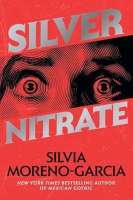 Silver Nitrate by Silvia Moreno-Garcia
Silver Nitrate by Silvia Moreno-Garcia
Set in 1990s Mexico City, this story follows a sound editor and a washed-up actor who discover a forgotten horror film rumored to be cursed and possibly linked to Nazi occultism. Itâs moody, stylish, and soaked in analog weirdness. Silver Nitrate plays with the power of media, memory, and magic like celluloid that wonât stop burning.
If you liked this found footage horror book list, check out some other Book Lists, and make sure to subscribe to Moniqueâs newsletter so you donât miss a single post!
May 4, 2025
Book Review: Vanishing World by Sayaka Murata Signal the End of Intimacy As We Know It
In Vanishing World, Sayaka Murata peels back the layers of modern detachment and reconfigures them into something stranger, lonelier, and oddly beautiful. This isn���t dystopians the way we���ve come to expect it. There are no flaming cities or rebel uprisings, no rigid authoritarianism. Instead, Murata offers something quieter and more terrifying: a future that���s already halfway here, where people still smile, still live, but love has lost all its teeth.
Told through the eyes of Amane Sakaguchi, Vanishing World plays out like an eerie memoir from a society where desire is quarantined, family is outsourced, and real human connection is a nostalgic relic. But this novel is not without tenderness. It���s just buried under layers of societal programming, sterile control, and a deep longing for something that may never return.
Table of Contents
ToggleA Childhood Built on Red Curtains and Fairy TalesDomesticity, DecoupledWhat Happens When Humanity Becomes OptionalAbout Sayaka Murata:
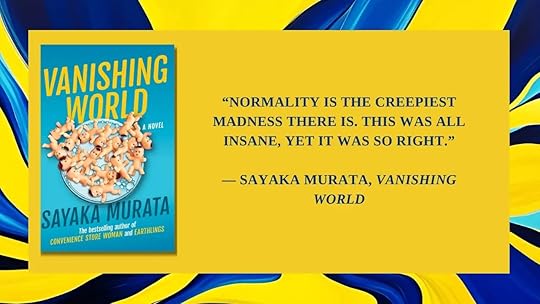
Amane grows up in the shadow of her mother���s walled garden ��� a home wrapped in red, filled with stories about love and marriage that feel more like curated myths than lived truths. Her parents are divorced. Her mother is unwavering in her belief in idealized love. So, Amane does what many do: she internalizes it, reimagines it, and finds her own version of it in a fictional character named Lapis.
Her first experience of love is not just emotional but physical. Lapis ��� a seven-thousand-year-old boy from an anime series ��� awakens something in her that feels real, sacred, and entirely hers. Unlike the sanitized version of childhood affection, Amane���s attachment is complete with desire, arousal, and the onset of menstruation. There���s no shame, no sense of confusion. This isn���t a metaphor. It���s a love story.
Through Amane���s friendship with Mizuuchi, a classmate who also adores Lapis but suppresses his feelings due to stigma, Murata reveals the way fictional love provides both refuge and revelation. Their shared rituals are not framed as immature, but as profound expressions of self in a world that doesn���t make room for them.
Domesticity, DecoupledAdulthood in Vanishing World doesn���t follow the traditional arc. Amane marries, but her relationship with her husband, Saku, is more aligned with companionship than romance. They eventually move to Experiment City, which is a sanitized, computer-managed community where marriage contracts dissolve with a click and reproduction is handled via artificial wombs. Saku himself becomes pregnant, and Amane navigates this new version of family with something like curiosity but never awe.
Murata uses Experiment City not to shock, but to show how fluidly society can adapt when it���s given the right language and infrastructure. Families no longer exist. Children (called Kodomo-chans) are raised by the state. People live alone. Even sexuality is outsourced to Clean Rooms, where urges can be managed without the mess of another person.
And yet, even in this world of antiseptic efficiency, Amane still loves her fictional partners. She still cherishes what others discard. In fact, it���s these nonreal lovers who continue to define her identity in a world that actively works to erase it.
This balance, between participation and quiet resistance, is where the novel finds its teeth. Amane isn���t rebellious. She simply refuses to relinquish the parts of herself that are inconvenient to the system. In doing so, she becomes something rare: a fully autonomous woman who makes no apologies for her interior life.
What Happens When Humanity Becomes OptionalAt its core, Vanishing World asks a series of quiet but brutal questions: What happens when love is no longer necessary for survival? When family is reduced to function? When sex becomes something you schedule, sterilize, and then forget?
Murata doesn���t offer answers. Instead, she presents a future where the scaffolding of human emotion still exists, but the structure has been gutted. Amane���s enduring love for fictional characters, which is unchanged by time and untouched by social shifts, is both a coping mechanism and a form of protest. It���s also oddly hopeful. In a world where everything real has been engineered to death, the imaginary still holds space for chaos, for longing, for something close to magic.
What makes Vanishing World truly unsettling isn���t its future tech or reversed pregnancies. It���s how easy it is to see ourselves sliding into its landscape ��� one compromised connection at a time. And while the novel doesn���t preach or mourn, it does leave readers with a soft, persistent ache: a reminder that intimacy, in all its messy, irrational glory, may be the only thing worth protecting after all.
About Sayaka Murata: Sayaka Murata is the author of many books, including��Convenience Store Woman, winner of the Akutagawa Prize,��Earthlings��and��Life Ceremony. Murata has been named a��Freeman���s�����Future of New Writing��� author and a��Vogue Japan��Woman of the Year.
Sayaka Murata is the author of many books, including��Convenience Store Woman, winner of the Akutagawa Prize,��Earthlings��and��Life Ceremony. Murata has been named a��Freeman���s�����Future of New Writing��� author and a��Vogue Japan��Woman of the Year.
Ginny Tapley Takemori has translated works by more than a dozen Japanese writers, including Ryu Murakami. She lives at the foot of a mountain in Eastern Japan.
May 3, 2025
BookStrology Weekly Forecast: May 5 â 11, 2025
When the cosmos gets cryptic, crack open a book.
Welcome back to BookStrology! This week crackles like static before a summer storm. With the Taurus Sun cozying up to Jupiter, and Mercury finally behaving, weâre in our main character era â but itâs giving emotionally complex and dramatically unbothered. Add a Pisces moon midweek and weâre spiraling in slow motion (with great lighting).
So, whether youâre plotting your escape or orchestrating your glow-up, let the cosmos curate your next read.
Table of Contents
ToggleBookStrology Weekly Forecast: May 5 â 11, 2025 Aries
Aries Taurus
Taurus Gemini
Gemini Cancer
Cancer Leo
Leo Virgo
Virgo Libra
Libra Scorpio
Scorpio Sagittarius
Sagittarius Capricorn
Capricorn Aquarius
Aquarius Pisces
Pisces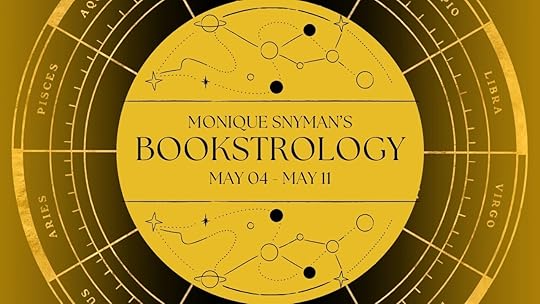 BookStrology Weekly Forecast: May 5 â 11, 2025
BookStrology Weekly Forecast: May 5 â 11, 2025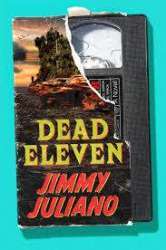
 Aries
AriesThis week: Youâre flirting with burnout and calling it productivity.
You’re not bored. Youâre starved for something to shock your system. Find a story that runs wild and refuses to be tamed.
Read: Dead Eleven by Jimmy Juliano
An island stuck in the ’90s, a woman unraveling a conspiracy â creepy, culty, and just unhinged enough.
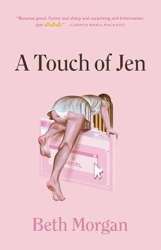
 Taurus
TaurusThis week: Youâre resisting change while craving transformation.
Jupiterâs expanding your comfort zone ⦠but gently. You need a book thatâs beautiful, broody, and a little dangerous.
Read: A Touch of Jen by Beth Morgan
Obsession, social media, and surreal horror. Itâs satire with teeth, and itâs quietly devastating.
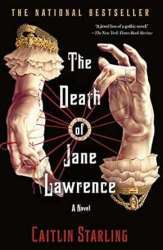
 Gemini
GeminiThis week: Your personality split is on speaking terms.
Youâre not two-faced, youâre multi-faceted, and you need a book with layers. Lots of them.
Read: The Death of Jane Lawrence by Caitlin Starling
Gothic, medical horror, haunted house vibes â think Crimson Peak meets Greyâs Anatomy with blood magic.
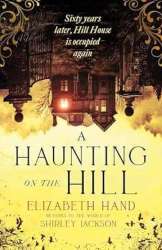
 Cancer
CancerThis week: Your emotional support water bottle is judging your life choices.
Youâre longing for connection but also hiding under ten blankets. Read something that understands your need to ache softly.
Read: A Haunting on the Hill by Elizabeth Hand
A Shirley Jacksonâsanctioned haunted tale with theatre kids, ghosts, and emotional rot. Absolutely perfect for your haunted little heart.
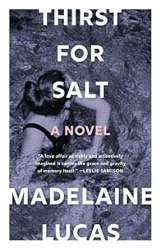
 Leo
LeoThis week: Youâre giving âlead in a prestige miniseries.â
The drama is high, the stakes are personal, and your inner monologue deserves an Emmy.
Read: Thirst for Salt by Madelaine Lucas
Coastal obsession, coming-of-age ache, and prose so cinematic it might ruin you.
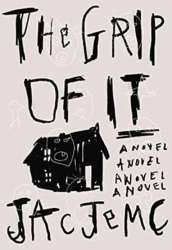
 Virgo
VirgoThis week: You want control, but the chaos keeps making itself at home.
Youâre tired of fixing everything. Let go (a little) and dive into a slow, eerie unraveling.
Read: The Grip of It by Jac Jemc
A haunted house story that doesnât play by the rules â unsettling, architectural, and deeply psychological.
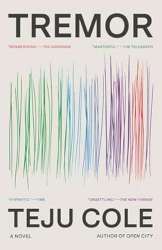
 Libra
LibraThis week: Youâre curating your crisis.
You can make heartbreak look like high art, but wouldnât it be nice if someone else fell apart for once?
Read: Tremor by Teju Cole
Lyrical, intellectual, and quietly explosive. This book leaves elegance smudged with smoke.
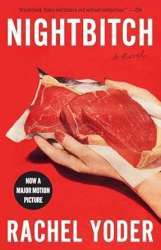
 Scorpio
ScorpioThis week: Youâre seductive, suspicious, and two seconds from uncovering a truth you werenât ready for.
Indulge your taste for the twisted, but make it meaningful.
Read: Nightbitch by Rachel Yoder
Motherhood, madness, metamorphosis ⦠primal and oddly empowering.
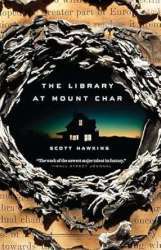
 Sagittarius
SagittariusThis week: Your body is here, but your soul is hitchhiking across dimensions.
You need adventure, but not the Instagrammable kind. No, you need something that gets weird fast.
Read: The Library at Mount Char by Scott Hawkins
Brutal, bizarre, and utterly original. This one will punch you in the brain (lovingly).
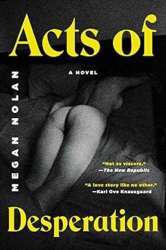
 Capricorn
CapricornThis week: Youâve got ambition poisoning and a God complex in remission.
You want a story that mirrors your silent chaos. Something smart, intense, and deeply human â¦
Read: Acts of Desperation by Megan Nolan
Messy women, self-destruction, and the economics of love. Itâs brutal but surgical.

 Aquarius
AquariusThis week: Youâre building a worldview and dismantling another all before breakfast.
Tap into your prophetic weirdness with a story that defies genre and logic.
Read: The Employees by Olga Ravn
Sci-fi workplace existentialism with poetic dread. Perfect for your future cult syllabus.
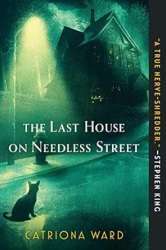
 Pisces
PiscesThis week: Youâre emotionally porous and the veil is thin.
Get lost in something that feels like a dream, a memory, and a premonition all at once.
Read: The Last House on Needless Street by Catriona Ward
Reality bends, memory lies, and thereâs a cat narrator. Itâs beautiful. Itâs terrifying.
Trust the stars. Burn the map. Read weird.
Catch you next week for more literary astrology chaos.





